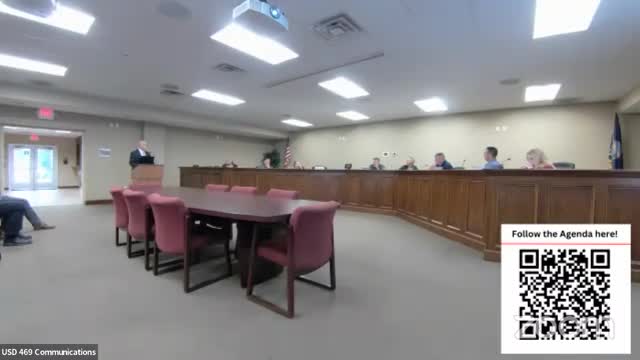School District Faces Tough Choices Amid Rising Tax Concerns
July 26, 2024 | Lansing, School Boards, Kansas

This article was created by AI summarizing key points discussed. AI makes mistakes, so for full details and context, please refer to the video of the full meeting. Please report any errors so we can fix them. Report an error »

During a recent government meeting, officials discussed the implications of local mill rates and their impact on taxpayers, emphasizing the need for fiscal responsibility and transparency in budgeting. A key point raised was the comparison of the district's mill rates with neighboring areas, indicating that even if the district's rate were to increase to 57, it would still remain lower than those of nearby districts such as Piper and Leavenworth.
The conversation highlighted the challenges faced by districts that rely heavily on residential property taxes, particularly in areas with limited industrial support. Officials acknowledged the burden that tax increases place on residents, especially when compounded over multiple years. One member pointed out that consistent increases could lead to significant annual costs for taxpayers, urging caution in future financial decisions.
Further analysis revealed that the district ranks in the bottom third of the state in terms of total cost per pupil, suggesting that spending has been managed conservatively. This efficiency was contrasted with other districts facing financial difficulties, underscoring the importance of maintaining a balanced budget while ensuring quality education.
The discussion also touched on the necessity of addressing building maintenance and infrastructure needs, which are critical for attracting families to the area. Officials stressed that without adequate reserves, the district would struggle to manage future expenses effectively.
Concerns were raised regarding the influence of state legislators on property tax policies, with calls for increased communication and pressure on elected officials to consider the financial strain on local taxpayers. The meeting concluded with a commitment to continue monitoring property tax rates and exploring options to maintain fiscal stability while providing essential services to the community.
The conversation highlighted the challenges faced by districts that rely heavily on residential property taxes, particularly in areas with limited industrial support. Officials acknowledged the burden that tax increases place on residents, especially when compounded over multiple years. One member pointed out that consistent increases could lead to significant annual costs for taxpayers, urging caution in future financial decisions.
Further analysis revealed that the district ranks in the bottom third of the state in terms of total cost per pupil, suggesting that spending has been managed conservatively. This efficiency was contrasted with other districts facing financial difficulties, underscoring the importance of maintaining a balanced budget while ensuring quality education.
The discussion also touched on the necessity of addressing building maintenance and infrastructure needs, which are critical for attracting families to the area. Officials stressed that without adequate reserves, the district would struggle to manage future expenses effectively.
Concerns were raised regarding the influence of state legislators on property tax policies, with calls for increased communication and pressure on elected officials to consider the financial strain on local taxpayers. The meeting concluded with a commitment to continue monitoring property tax rates and exploring options to maintain fiscal stability while providing essential services to the community.
View full meeting
This article is based on a recent meeting—watch the full video and explore the complete transcript for deeper insights into the discussion.
View full meeting
